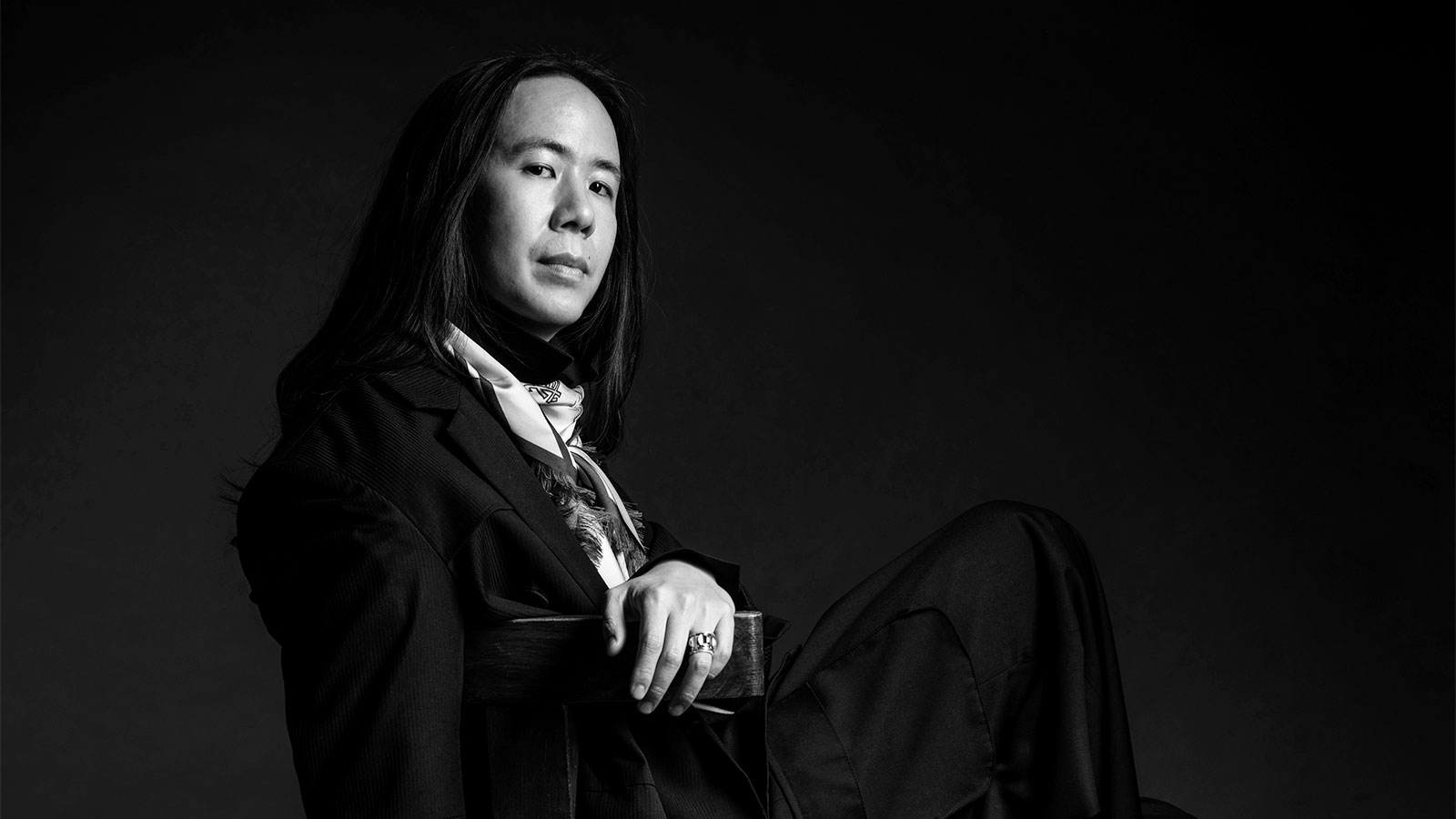William Fan flies the flag for sustainable unisex design without seasonal constraints and trend prints, showing the big boys how fashion should be done. With his own label, the young Berlin designer is setting an example – and encouraging others to do the same.
FACES: What’s the most important lesson you’ve learned while working at Alexander McQueen?
William Fan: My time at Alexander McQueen taught me to work on a visual expression without compromise. I was given access to a special infrastructure that opened up the world of the luxury industry to me at a young age. It was a very intense period of my life with many unique moments.
F: You design without gender and beyond the boundaries of different seasons. What is the biggest challenge here?
WF: This way of designing comes very naturally to me, which is why I personally don’t see any major challenges – except that customers often think in binary structures and seasonally. However, most of them open up very quickly and recognize the resulting consistency and calm. Design should have no gender, and we solve many things with the right fit for the most diverse body types.
Without gender, seasonal and trend labels
F: What is the reason why you design your collections without gender and seasonal labels?
WF: I like the idea of a design that can be adapted and interpreted at will, without being distracted by trends or categorizations. After eight years, we are still selling products from the first collection together with those from the latest collection. I like to invest a lot of time in functional design and develop it further from collection to collection. It is important to me to always take a critical look at existing details and adapt them to the times. I find the learned system of shopping in separate departments or the loss of value of a garment after a season has ended more than critical. In my opinion, both no longer belong in today’s world and should be reconsidered for the entire industry.
F: Do we still need this typical trend thinking at all?
WF: In my opinion, there are many more parallel fashion trends today than one specific trend. This gives rise to different vibrations, which the mainstream then follows. The times of clear images like in the 20th century are over. The days of the 20th century, when the decades could be clearly separated visually, are over. I don’t see trends as sustainable because they are designed to be fast-moving per se and are guaranteed to disappear again quickly. A trend is like fast food: quick satisfaction with few ingredients.
F: With what requirements in mind do you select the materials for your collections?
WF: Materials always have to give me a comfortable feeling and of course work perfectly with the respective cut so that it falls perfectly. I also find it exciting to use strange fabrics from the furniture industry or sportswear in ready-to-wear. My collections are primarily filled with classic and modern natural materials such as silk, cashmere and wool. However, I am also a fan of technological materials if they bring a special function or a new image.
F: What is typical of William Fan when it comes to fashion? And what is particularly typical for you personally?
WF: When the same look works on different people regardless of gender and age, without looking like a disguise. Products that are coherent and subtle in themselves and build on each other collection-wise, and the exchange between German and Chinese culture, are things that are probably typical for me and the brand. I am always looking for a balance that must feel meaningful.
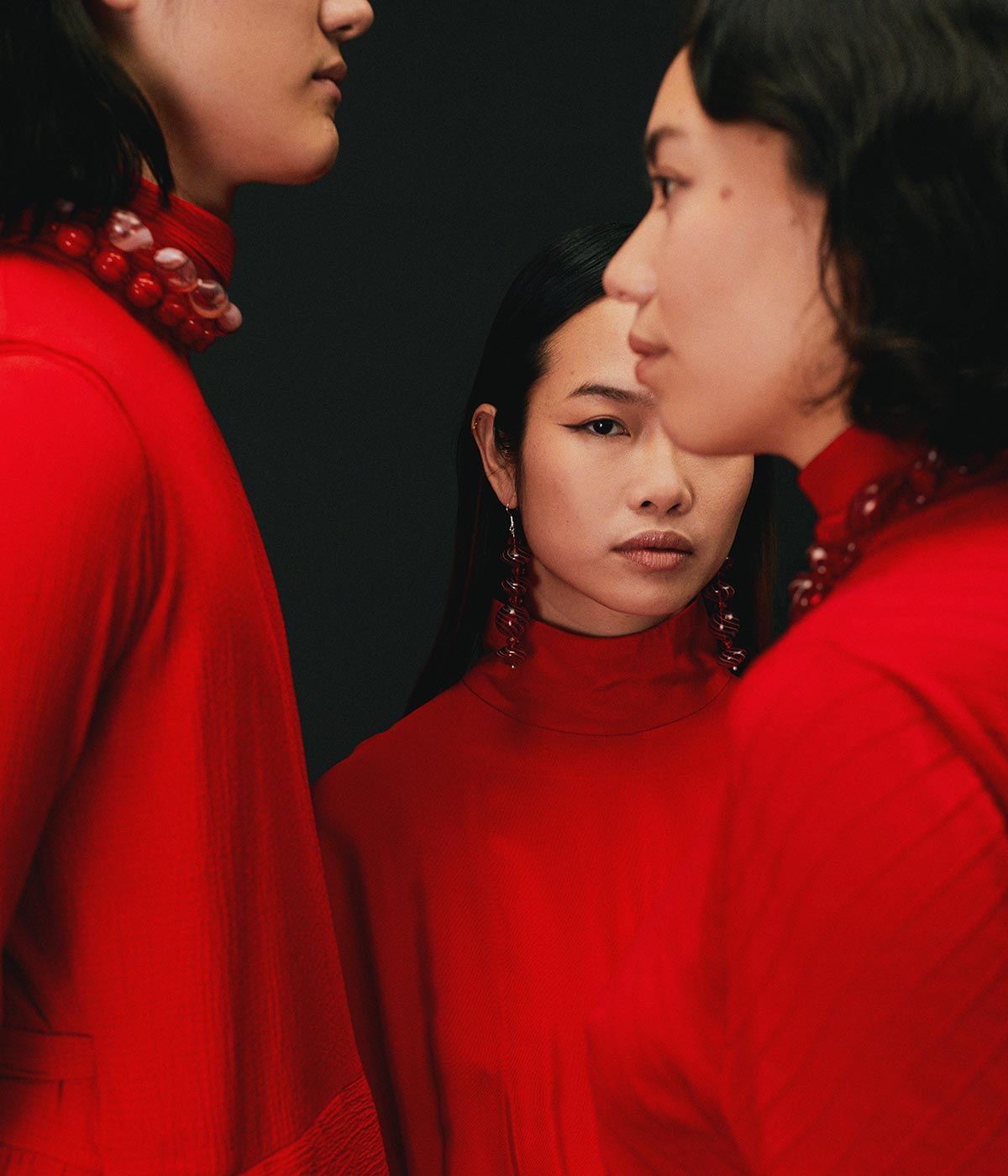
About models and high hurdles
F: Why do you cast your models on the street and how do you go about it?
WF: Over the years, we have developed a keen eye for our casting and love discovering new faces. It is a spontaneous moment and impulse in which we decide whether someone is a good match or not. A special expression, a special attitude or a particularly open manner are often the decisive factors in a person touching me. With Streetcast models, we can create a self-determined casting without having to rely on traditional agencies.
F: How have the demands on models changed in recent years?
WF: Awareness of the importance of diverse casting for society has increased significantly. The classic ideal of beauty is broken up and the spectrum for otherness is expanded. The image becomes more real on the one hand and surreal on the other. It’s like trends: there are many parallel currents that coexist. Natural and unnatural ideals of beauty have probably never existed in such stark contrast to one another.
F: How difficult is it to be a designer in the global arena?
WF: Attracting international attention despite this local fame, but without a large network, is a difficult step. We believe in natural and healthy growth and already have an international network of customers. I believe in the right timing and in honestly grown connections.
F: What are currently your biggest hurdles?
WF: Making the transition from young designer to established label is a big challenge right now. Wanting to grow on the one hand and finding our own rhythm at the same time is the current focus.
F: As a designer, what is the right way to deal with inspiration, for example from other cultures?
WF: In my opinion, inspiration should always be treated with a personal and contextual reference, such as one’s own roots, and not just for the sake of aesthetics. Working in person seems to me to be the most authentic approach. Awareness and respect for other cultures are important here. It is not a buffet that everyone is entitled to. Many details and patterns that appear beautiful and “exotic” are often tainted with oppression, religion and discrimination. If you don’t hit the right note, you can be very hurtful and ignorant of a culture.
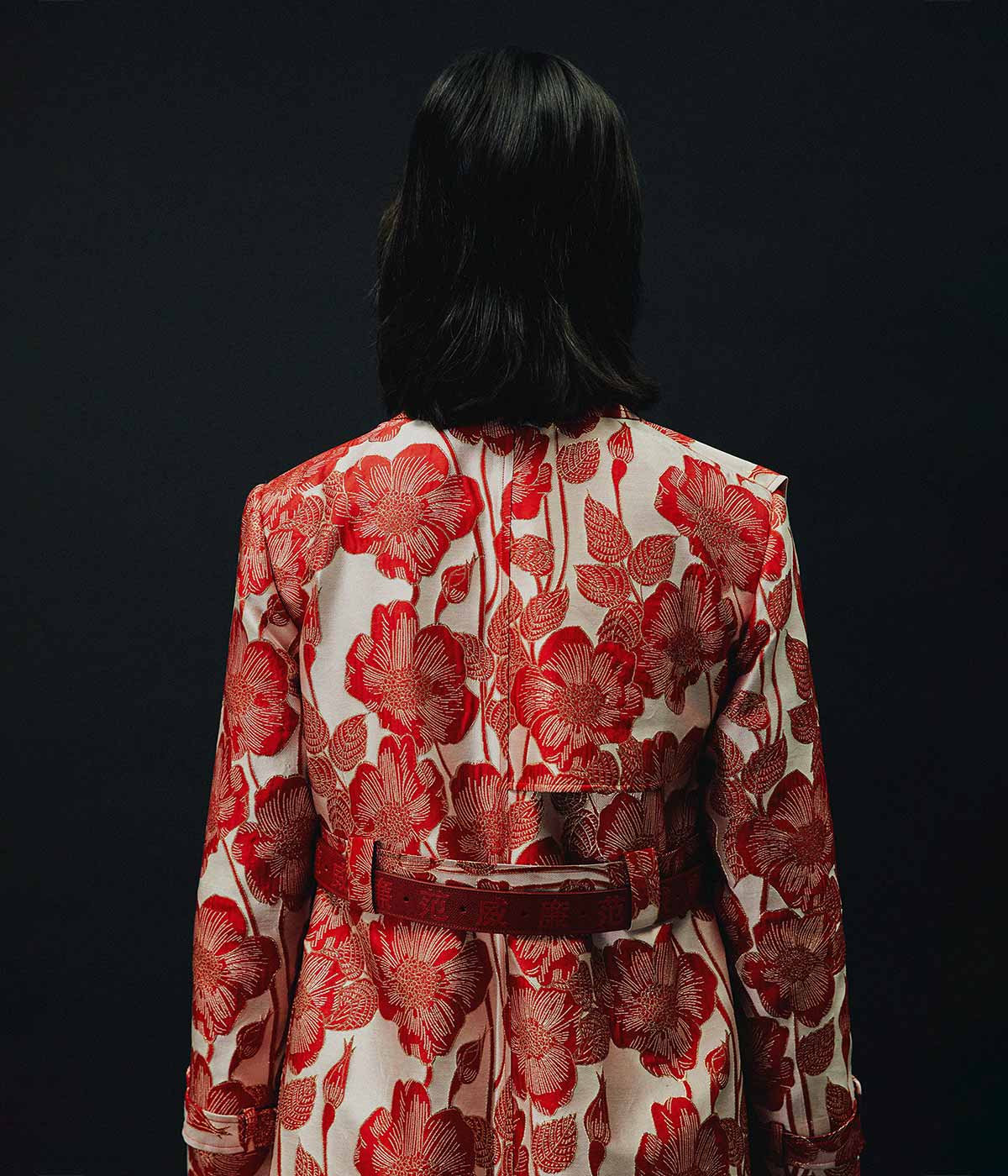
Sustainable production and the right fashion consumption
F: You have your collections produced in China and Hong Kong. What makes a good production facility and how difficult was it to find one?
WF: We now also produce in several production facilities in Italy and Germany. All productions are smaller family businesses with which we are in constant contact. We always find them through personal contacts, which of course requires a leap of faith. A common understanding of quality must be the basis. The most exciting thing is whether we can develop a language together.
F: What is the right way to consume fashion?
WF: You should always keep an overview of your closet and not buy too much. Every item of clothing has to trigger something in me personally, otherwise I part with it.
F: Your collections are available as soon as you have shown them on the catwalk. Why are you doing this?
WF: We keep finding that our customers no longer want to wait six months for the collection to be available, which is certainly also an effect of the accelerating pace of technological change. Consumer behavior is strongly influenced by social media in particular and ideally wants to be satisfied “instantly”. The embodied feeling of the runway show can be made directly accessible through See-Now-Buy-Now.
See-Now-Buy-Now and its challenges
F: What is the challenge for you about See-Now-Buy-Now?
WF: The collections are designed a whole year in advance. We are therefore looking even further into the future and the challenge is to have a good assessment of the future market.
F: What changes for you in terms of planning your collections with this concept?
WF: For the changeover, two collections have to be completed at the same time. In addition, the production has to arrive in time for the presentation every time so that the concept works. This is quite a challenge for a small team.
F: What’s the hard part about implementing see-now-buy-now over the long term, and what are the benefits?
WF: I like to work on the collection right up to the last moment, which is no longer necessary thanks to the see-now-buy-now concept. That’s a big change for me. However, the momentum generated by the presentation can be utilized much more intensively. We like to try out new concepts. We will see how this model develops for us in the coming seasons.
F: In addition to fashion, you also design furniture. What is more difficult and why?
WF: Furniture is more difficult for me personally because I don’t have the craftsmanship skills. Fashion can be realized much faster for me, theoretically also with my own hands, because I am trained in it.
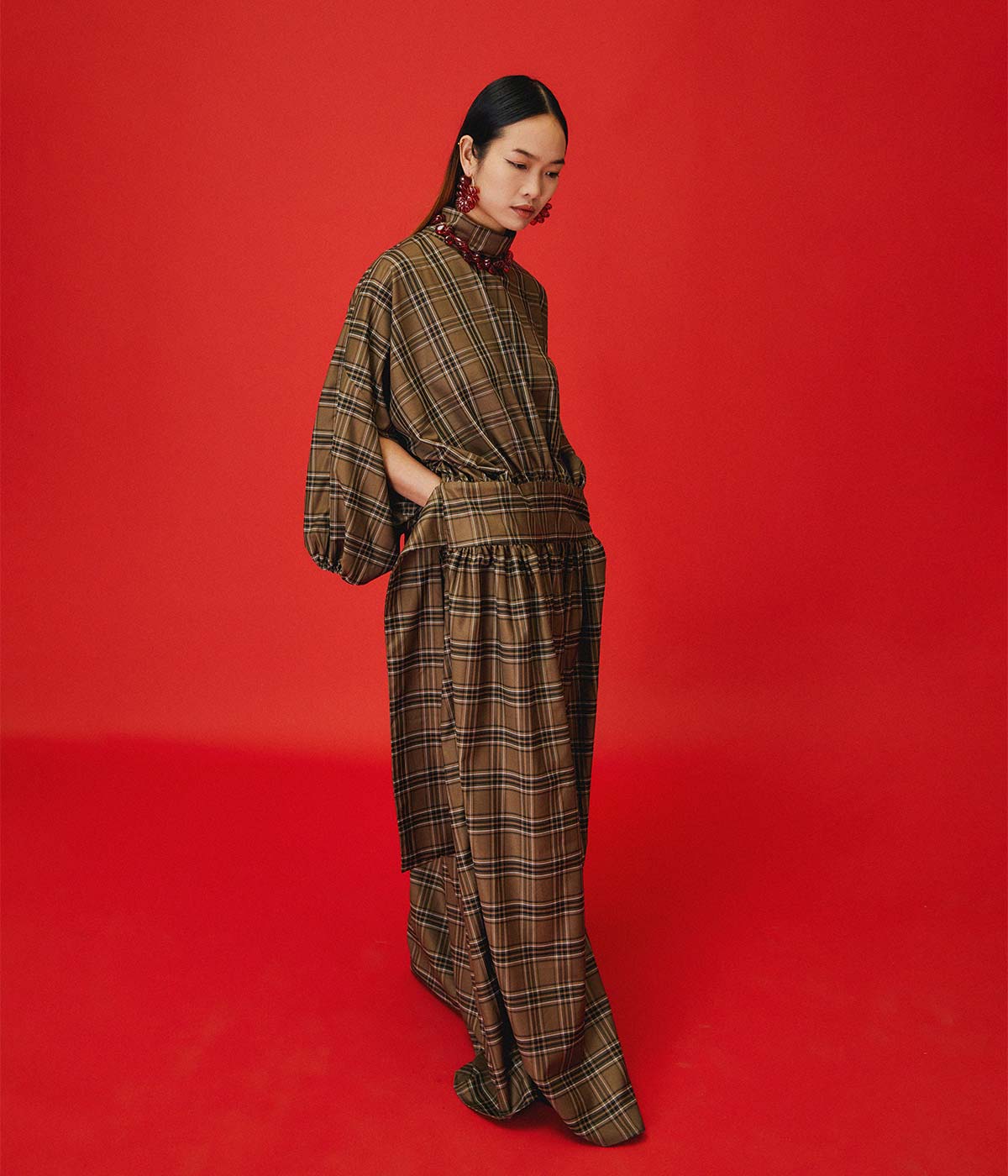
How William Fan lives in Berlin
F: From furniture to apartment: How do you live?
WF: I still live in my student apartment, the rooms of which have changed with me over the years. It’s within walking distance of the studio, which I particularly enjoy.
F: What is your favorite corner in your apartment?
WF: My sofa is definitely my favorite place to be. After a long day at work, this is the best place to switch off with a record or a good movie.
F: Which city inspires you and why?
WF: The cities around Venice currently inspire me a lot with their old urban structures. That’s also where my productions are located, where I get a lot of ideas in a creative environment. Padua, for example, is a great discovery.
F: What’s the greatest thing about Berlin, and what annoys you most about the city and its inhabitants?
WF: I find the spaciousness and size of Berlin attractive. There is always something new to discover in the diverse districts. There is an incredible amount of history in Berlin, and the city and its past are more relevant than ever. The many cultural events such as Fashion Week, Gallery Weekend and the Berlinale are important sources of inspiration for the artistic sector. I sometimes wish that the city and its environment were treated with a little more respect.
Luxury, indulgence and days off
F: What does luxury mean to you?
WF: For me, luxury means living in a democracy.
F: What do you treat yourself to?
WF: I like to treat myself to good cocktails. The best ones can be found in the Victoria Bar.
F: What do you do on your day off?
WF: I like to go for walks and discover new streets.
F: How do you envision the future?
WF: I hope I can continue in my job for as long as possible, realize my visions and grow together with my team.
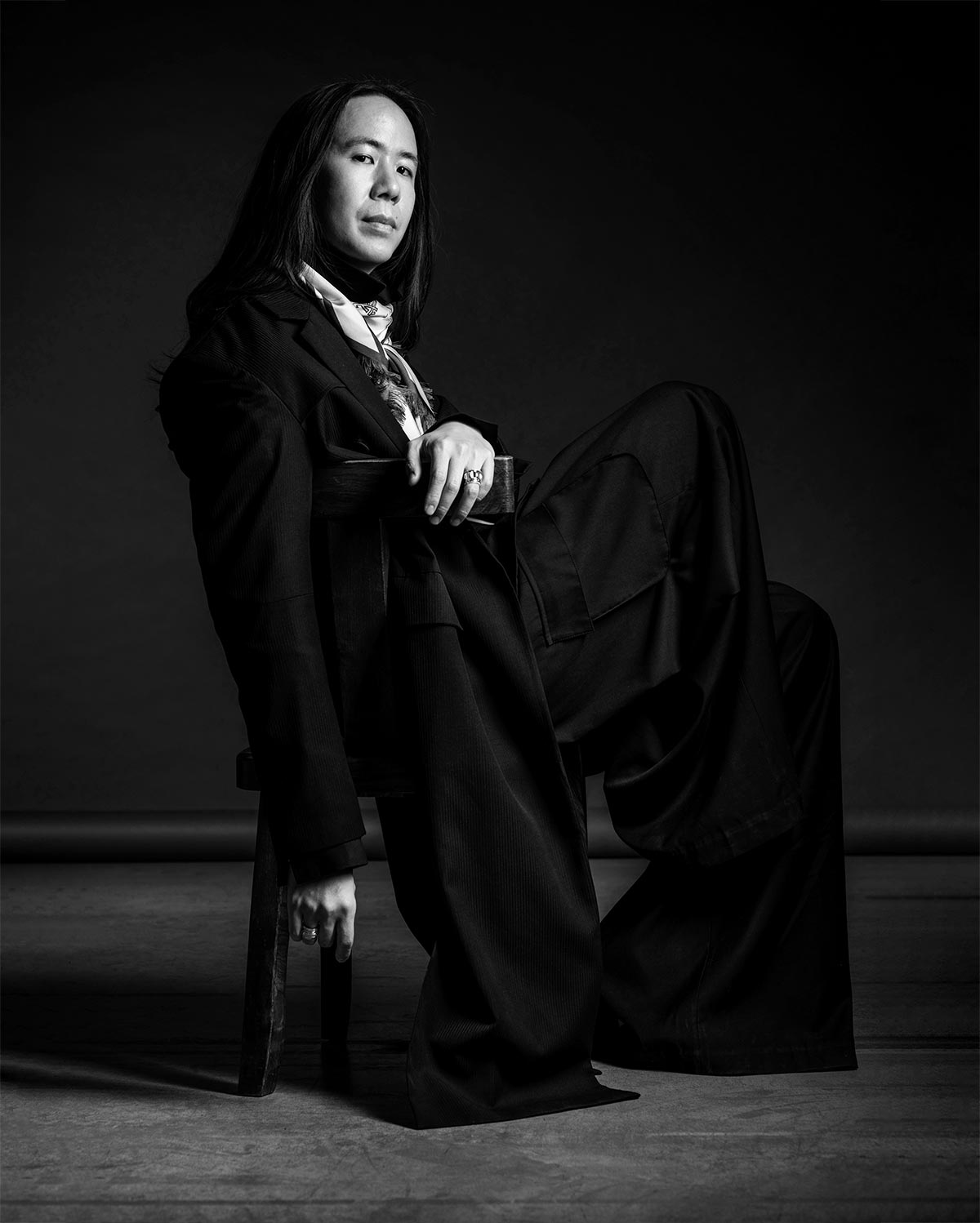
William Fan
The room in his shared flat used to be his showroom, but now William Fan has his own studio. The student apartment has remained, success has come, because the Berlin designer has managed to combine sustainable business and fashion. Fan not only focuses on see-now-buy-now and unisex collections, but also on seasonless clothing that can – and should – always be combined with each other and with previous designs! William Fan learned to sew from his mother and the craft of design from his studies. And the talent? Well, the Berliner has always had that in his blood. Courage, too, as his request to those responsible for Berlin Fashion Week after graduation led directly to his first major fashion show – and the start of his career.
williamfan.com
Models Alessa and Anna Winter reveal the best places in Berlin here.
Teaser photo & campaign photos: © Prissilya Junewin
Portrait photo: Detlef Eden


